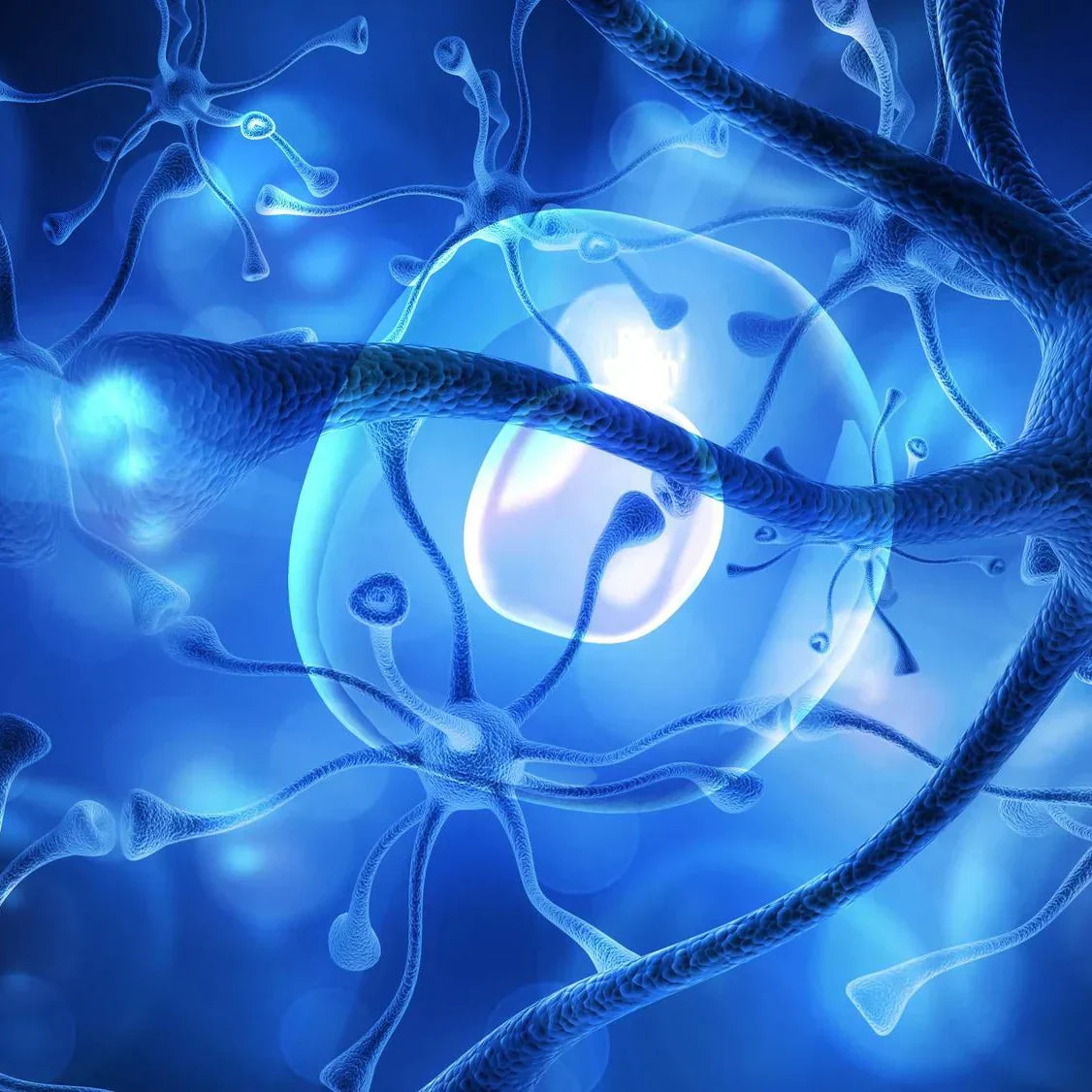The nuclear factor kappa B (NF-κB) pathway represents one of the most critical signaling cascades in mammalian cells, functioning as a master regulator of inflammatory responses, immune function, and cell survival. Research has identified this pathway as central to numerous physiological processes and pathological conditions, with increasing evidence supporting its role in diseases ranging from cancer to neurodegenerative disorders. As revealed by extensive studies, NF-κB orchestrates innate and adaptive immune functions while contributing to chronic inflammation, cellular transformation, and proliferation that can drive disease progression6. The pathway's complexity and ubiquitous involvement in cellular processes make it an attractive yet challenging therapeutic target. Current research has identified several promising interventions targeting NF-κB, including natural compounds, pharmaceuticals, and peptides, though challenges remain in translating these findings into effective clinical treatments with minimal side effects.
Fundamentals of the NF-κB Pathway
Molecular Structure and Components
The NF-κB transcription factor family plays a pivotal role in regulating numerous genes involved in immune, inflammatory, and apoptotic functions throughout the body. Under normal physiological conditions, NF-κB remains sequestered in the cytoplasm, bound to inhibitory proteins known as inhibitors of κB (IκB)8. This inactive state prevents unwarranted gene transcription and maintains cellular homeostasis until appropriate stimuli trigger the pathway's activation. The NF-κB family comprises several protein subunits that can form various dimeric complexes, each potentially regulating different sets of target genes. These proteins participate in the regulation of a wide range of genes, though the specific mechanisms underlying this regulation are still not completely understood despite extensive research18. The versatility of NF-κB signaling explains its central position in numerous cellular processes and its increasingly recognized importance in both normal physiology and pathological states.
Activation Mechanisms
The NF-κB signaling pathway can be activated through multiple mechanisms, with the canonical pathway being the most well-characterized. In this pathway, various stimuli—including cytokines, pathogens, oxidative stress, and even radiation—trigger a signaling cascade that culminates in NF-κB activation8. The process typically begins with the activation of IκB kinase (IKK) complex, which phosphorylates IκB proteins. This phosphorylation marks IκB for ubiquitination and subsequent proteasomal degradation, thereby releasing NF-κB dimers from their inhibitory grip8. Once liberated, NF-κB subunits, particularly p65, translocate to the nucleus where they bind to specific DNA sequences and regulate gene expression10. This nuclear translocation represents a critical step in the pathway, as it allows NF-κB to exert its transcriptional control over numerous target genes involved in inflammation, immune response, cell survival, and proliferation. The precise regulation of this process is essential for appropriate cellular responses to various stimuli, as dysregulated NF-κB activation can lead to pathological conditions.
Downstream Effectors and Targets
Upon nuclear translocation, NF-κB activates the transcription of numerous genes involved in inflammation, immune response, and cell survival. The pathway significantly influences the expression of pro-inflammatory cytokines, chemokines, adhesion molecules, and enzymes that propagate inflammatory responses6. Additionally, NF-κB regulates genes involved in cell proliferation, differentiation, and apoptosis, contributing to its crucial role in tissue homeostasis and disease pathogenesis. Research has revealed that NF-κB can interact with other signaling pathways, creating complex networks that fine-tune cellular responses to various stimuli. For instance, studies have demonstrated cross-talk between NF-κB and Notch signaling pathways, adding another layer of complexity to its regulatory functions14. Furthermore, NF-κB has been linked to the hypoxic response through transcriptional regulation of hypoxia-inducible factor 1-alpha (HIF-1α), highlighting its involvement in cellular adaptation to low oxygen conditions7. These interconnections underscore the central position of NF-κB in coordinating multiple cellular processes and explain its dysregulation in numerous pathological conditions.
NF-κB in Disease Pathogenesis
Role in Inflammatory Disorders
The NF-κB pathway serves as a critical mediator in various inflammatory disorders, where its persistent activation contributes to chronic inflammation and tissue damage. In liver diseases, NF-κB plays a crucial role in sepsis-induced injury, with research demonstrating that disrupted redox equilibrium, excessive iron, and enhanced lipid peroxidation—key features of ferroptosis—are significantly influenced by NF-κB signaling1. Similarly, in renal disorders such as obstructive renal fibrosis, NF-κB activation enhances inflammation through the SPRY1/ERK pathway, promoting disease progression5. The pathway's activation in vascular tissues contributes to atherosclerosis and vascular aging, with studies in rat models showing that imbalances in lipid metabolism working through the NF-κB pathway can increase vascular endothelial cell damage by 33% and accelerate vascular aging by 27%15. These findings underscore how NF-κB serves as a common mediator across diverse inflammatory conditions, making it a potential target for therapeutic interventions aimed at reducing inflammation-driven pathologies.
Cancer and NF-κB Signaling
NF-κB signaling plays a pivotal role in cancer development and progression through multiple mechanisms that promote tumorigenesis. Research has established that NF-κB activation is linked to cancer initiation and development through its induction of chronic inflammation, cellular transformation, and proliferation6. In gastrointestinal cancers, including gastric and colorectal cancers, NF-κB signaling is particularly relevant due to its interaction with the microbiota that resides in the gastrointestinal tract. Specific bacteria, including Helicobacter pylori in gastric cancer and Fusobacterium nucleatum in colorectal cancer, modulate NF-κB signaling to create a pro-tumorigenic environment6. Furthermore, compounds that can suppress NF-κB signaling have shown promising anti-cancer potential. For instance, derivatives of dehydrozingerone, a secondary metabolite from ginger, exhibit potent cytotoxic effects against cancer cell lines through suppression of the AKT/mTOR signaling that regulates NF-κB3. This suppression not only inhibits cancer cell proliferation but also reduces their invasive potential by modulating the expression of markers involved in cellular invasion. The cross-talk between NF-κB and other signaling pathways further complicates its role in cancer, highlighting the need for targeted approaches in cancer therapy.
Neurodegenerative Diseases
The NF-κB pathway has emerged as a significant factor in the pathogenesis of neurodegenerative diseases, particularly Alzheimer's Disease (AD). As the most common neurodegenerative disease worldwide with a prevalence expected to double every 20 years, AD pathology extends beyond the characteristic formation of amyloid-beta plaques and neurofibrillary tangles to include neuroinflammation where NF-κB plays a central role12. In the central nervous system, NF-κB activation occurs specifically in neuronal cells during neurodegenerative processes, although whether this activation contributes to degeneration or represents a protective mechanism remains debated18. Research has shown that NF-κB interacts with various molecular factors in AD models, including reactive microglia and astrocytes, β-secretase, APOE, glutamate, miRNA, and tau protein, suggesting multiple pathways through which it influences disease progression12. The failure of many AD drugs has led to increased interest in novel targets, with NF-κB inhibitors representing a promising avenue for future therapeutic development. Understanding the specific mechanisms of NF-κB activation in different cell types within the CNS will be crucial for developing effective treatments that target the inflammatory component of neurodegenerative diseases.
Cardiovascular and Renal Pathologies
The NF-κB pathway significantly contributes to the development and progression of cardiovascular and renal diseases through inflammation-mediated mechanisms. In cardiovascular pathologies, NF-κB activation promotes atherosclerosis and vascular aging, with studies demonstrating that pathway activation through lipid metabolism imbalances can increase apoptosis rates in rat blood vessels by 24% and proliferation rates by 18%15. Similarly, intracranial aneurysms (IA) development has been closely linked to hemodynamic stress and inflammatory pathways, with NF-κB playing a central role in the alterations of vascular smooth muscle cells, extracellular matrix, and endothelial cells that lead to aneurysm formation, growth, and potential rupture2. In the renal system, NF-κB activation contributes to various pathologies including fibrosis and inflammatory damage. Research into obstructive renal fibrosis has revealed that microRNA-21-5p promotes fibrosis by activating the SPRY1/ERK/NF-κB signaling pathway, enhancing inflammation in the process5. Additionally, in Alport syndrome, a hereditary chronic kidney disease characterized by progressive renal dysfunction, the accompanying glomerular and tubular inflammatory changes have prompted investigation into NF-κB-targeting compounds such as bardoxolone methyl, although clinical outcomes have been controversial4. These findings collectively highlight the significant impact of NF-κB signaling on cardiovascular and renal health, suggesting potential therapeutic approaches through pathway modulation.
Therapeutic Approaches Targeting NF-κB
Natural Compounds and Phytochemicals
Natural compounds, particularly terpenoids, have demonstrated significant potential in modulating the NF-κB pathway with implications for various disease treatments. Terpenoids, which are major constituents of nutritionally used fruits, vegetables, and different spices, possess various pharmacological actions including anticancer activity through NF-κB inhibition10. These compounds, which include monoterpenoids, sesquiterpenoids, diterpenoids, sesterterpenoids, triterpenoids, tetraterpenoids, and polyterpenoids, inhibit the NF-κB signaling pathway through multiple mechanisms including IκB phosphorylation, DNA binding, and p65 translocation10. Artemisitene (ATT), a specific terpenoid, has shown promise in treating sepsis-induced liver injury by significantly reducing NF-κB subunit expression, thereby decreasing LPS-induced hepatic oxidative stress and inflammation1. Similarly, sulforaphane, a compound found in cruciferous vegetables, protects retinal pigment epithelial cells from LPS-induced inflammatory injury by suppressing the PWRN2/NF-κB pathway in a concentration-dependent manner17. These natural compounds offer advantageous therapeutic options due to their generally lower toxicity profiles compared to synthetic drugs and their ability to target multiple aspects of the NF-κB pathway. The growing body of research on these compounds provides valuable insights into their potential application in treating inflammatory conditions, cancer, and other diseases where NF-κB dysregulation plays a central role.
Pharmaceutical Agents and Synthetic Inhibitors
Various pharmaceutical agents have been developed to target the NF-κB pathway, showing promise in treating conditions ranging from cancer to inflammatory disorders. In the context of radiation treatment for cancer, several NF-κB inhibitors have been employed to counteract the adverse effects of radiation-induced NF-κB activation, which can lead to treatment resistance. These inhibitors include MG132, bortezomib, curcumin, DHMEQ, naringin, sorafenib, genistein, and parthenolide, each acting through different mechanisms to suppress NF-κB activation8. Antibiotics like ciprofloxacin and levofloxacin have demonstrated additional benefits beyond their antimicrobial activity, as they can attenuate microglial inflammatory responses via the TLR4/NF-κB pathway, suggesting potential applications in neuroinflammatory conditions11. The anesthetic agent propofol has also been found to regulate the TLR4/NF-κB pathway, potentially protecting the colorectal cancer intestinal barrier19. Despite these promising findings, challenges remain in developing targeted NF-κB inhibitors with minimal side effects. For instance, the experience with bardoxolone methyl in Alport syndrome illustrates the complexity of targeting NF-κB in clinical settings, as despite its anti-inflammatory effects through NF-κB suppression, concerns about safety signals and marketing interests influencing clinical outcomes have been raised4. These examples highlight both the potential and challenges of pharmaceutical approaches to NF-κB modulation.
Peptides and Novel Biologics
Peptides and biologic agents represent an emerging frontier in targeting the NF-κB pathway with potentially greater specificity than small molecule inhibitors. Copper-binding peptides, for instance, have shown significant anti-inflammatory activity in microglia cultures by suppressing the NF-κB pathway. These peptides decreased nuclear translocation of NF-κB p65 by approximately 30% and specific sequences within these peptides demonstrated high affinity for binding NF-κB p65 in molecular docking studies (up to -8.8 kcal/mol)13. The ability of these food-derived peptides to modulate NF-κB signaling suggests their potential for neuroprotective applications, though questions about their bioavailability and in vivo efficacy require further investigation. Additionally, the study of bacterial toxins that target NF-κB, such as AIP56, provides insights into novel mechanisms that could be harnessed for therapeutic purposes16. Unlike conventional drugs that may affect multiple pathways, biologics can be engineered to target specific components of the NF-κB pathway with greater precision. This approach may reduce off-target effects while maintaining therapeutic efficacy, though challenges related to delivery, immunogenicity, and cost remain significant considerations. As research in this area advances, peptides and biologics may offer new solutions for conditions where current NF-κB-targeting strategies have shown limited success or unacceptable side effects.
Challenges and Future Directions
Limitations of Current Therapeutic Strategies
Despite the promising potential of NF-κB-targeted therapeutics, several limitations hinder their clinical application. One significant challenge is the fundamental role NF-κB plays in normal physiological processes, including immune function, making complete inhibition potentially harmful. The experience with bardoxolone methyl in Alport syndrome illustrates this complexity, where despite theoretical benefits through NF-κB suppression, clinical trials revealed alarming safety signals, including increased hospitalizations for heart failure, fatal and nonfatal cardiovascular events, liver toxicity, and increased blood pressure and albuminuria4. Additionally, the multifaceted nature of NF-κB signaling, with its involvement in numerous cellular processes and interactions with other pathways, makes targeted intervention without off-target effects extremely difficult. In neurological conditions like Alzheimer's disease, the dual nature of NF-κB—potentially contributing to both neurodegenerative processes and protective mechanisms—creates additional complexity in therapeutic development18. Furthermore, the tissue-specific and context-dependent roles of NF-κB require more nuanced approaches than broad inhibition. Current therapeutic strategies often lack this specificity, potentially explaining why some promising laboratory findings fail to translate into clinical success. These limitations underscore the need for more sophisticated approaches to NF-κB modulation that consider its complex biological roles.
Emerging Research and Novel Targets
The field of NF-κB research continues to evolve, with emerging studies identifying novel regulatory mechanisms and potential therapeutic targets. Recent advances have revealed the complex interplay between NF-κB and other signaling pathways, such as the cross-talk with Notch signaling, opening new avenues for therapeutic intervention14. In Alzheimer's disease research, understanding the complete mechanistic activation of NF-κB in different cell types has been identified as crucial for developing effective treatments, with investigations into compounds and small molecules targeting NF-κB signaling generating widespread interest12. The role of microRNAs in regulating NF-κB activity has also emerged as a promising area, with studies demonstrating that miR-21-5p promotes obstructive renal fibrosis by enhancing inflammation through the SPRY1/ERK/NF-κB pathway5. This finding suggests potential therapeutic approaches targeting microRNA expression or function. Additionally, research into the relationship between the microbiota and NF-κB signaling, particularly in gastrointestinal cancers, has revealed potential targets for intervention through modulation of the gut microbiome6. Novel delivery systems, including nanoparticles and targeted biologics, may overcome current limitations in delivering NF-κB modulators to specific tissues while sparing others. These emerging research areas collectively suggest that more precise and context-specific approaches to NF-κB modulation may yield therapeutic benefits while minimizing adverse effects.
Future Therapeutic Potential
The future of NF-κB-targeted therapies holds significant promise, particularly as our understanding of pathway specificity and contextual regulation improves. Development of compounds that target specific NF-κB subunits or that modulate the pathway in a tissue-specific manner may overcome current limitations of broad inhibition approaches. Natural compounds continue to offer promising avenues for therapeutic development, with ongoing research into terpenoids and other phytochemicals that inhibit NF-κB signaling through multiple mechanisms including IκB phosphorylation, DNA binding, and p65 translocation10. The application of these compounds in conditions ranging from cancer to neurodegenerative diseases warrants further investigation. In the field of peptides and biologics, copper-binding peptides represent food-derived compounds with potential neuroprotective properties, though their chelation of copper excess in the CNS and bioavailability require additional research13. For conditions like Alzheimer's disease, the complete understanding of NF-κB mechanistic activation in different cell types will provide more therapeutic options, with NF-κB inhibitors potentially generating widespread interest in future research12. As precision medicine advances, individualized approaches to NF-κB modulation based on patient-specific factors may become feasible. These developments, coupled with improved delivery methods and combination therapies that target multiple aspects of NF-κB signaling or complement other treatment modalities, suggest a promising future for therapeutic strategies targeting this pivotal pathway.
Conclusion
The NF-κB pathway stands as a master regulator of inflammatory processes with profound implications for health and disease. Its complex role in immune function, cell survival, and inflammatory responses places it at the center of numerous pathological conditions, from cancer and neurodegenerative diseases to cardiovascular and renal disorders. The intricate mechanisms governing NF-κB activation—involving inhibitory protein degradation, subunit translocation, and transcriptional regulation—provide multiple points for therapeutic intervention. Current evidence supports the efficacy of various compounds in modulating NF-κB activity, including natural terpenoids, pharmaceutical agents, and emerging peptide-based approaches. However, significant challenges remain in translating these findings into clinical applications, primarily due to the ubiquitous and context-dependent nature of NF-κB signaling. The experience with bardoxolone methyl in Alport syndrome serves as a cautionary tale, highlighting how targeting NF-κB without sufficient specificity can lead to concerning safety signals despite theoretical benefits. Future directions in NF-κB research must focus on developing more precise interventions that consider tissue-specific roles and pathway cross-talk while minimizing disruption to essential physiological functions. As our understanding of this pathway continues to evolve, so too will our ability to harness its therapeutic potential while mitigating risks, potentially revolutionizing treatment approaches for numerous inflammatory and degenerative conditions.
Citations:
- https://www.ncbi.nlm.nih.gov/pmc/articles/PMC10167592/
- https://www.ncbi.nlm.nih.gov/pmc/articles/PMC10871091/
- https://pubmed.ncbi.nlm.nih.gov/30108729/
- https://pubmed.ncbi.nlm.nih.gov/36731435/
- https://www.ncbi.nlm.nih.gov/pmc/articles/PMC8358893/
- https://www.ncbi.nlm.nih.gov/pmc/articles/PMC7338561/
- https://pubmed.ncbi.nlm.nih.gov/18432192/
- https://pubmed.ncbi.nlm.nih.gov/27554808/
- https://www.ncbi.nlm.nih.gov/pmc/articles/PMC8596927/
- https://pubmed.ncbi.nlm.nih.gov/27685522/
- https://www.ncbi.nlm.nih.gov/pmc/articles/PMC6637517/
- https://www.ncbi.nlm.nih.gov/pmc/articles/PMC9408758/
- https://pubmed.ncbi.nlm.nih.gov/34532985/
- https://www.semanticscholar.org/paper/a9fcb6bd1d9242a76d59b6264354463516786ba6
- https://pubmed.ncbi.nlm.nih.gov/35818259/
- https://www.semanticscholar.org/paper/eac327649ac3384eb468c80b0dd93ec2fffdb19d
- https://pubmed.ncbi.nlm.nih.gov/35766158/
- https://www.semanticscholar.org/paper/20ee805cbac9d7203f8fdf932eaf95f47fc6e8c4
- https://pubmed.ncbi.nlm.nih.gov/34081253/
- https://www.semanticscholar.org/paper/ee7711f231fbedfa7047d1ce6d3650b80af3b00c
- https://pubmed.ncbi.nlm.nih.gov/33484087/
- https://www.ncbi.nlm.nih.gov/pmc/articles/PMC9217538/
- https://pubmed.ncbi.nlm.nih.gov/37038955/
- https://www.ncbi.nlm.nih.gov/pmc/articles/PMC7904692/
- https://pubmed.ncbi.nlm.nih.gov/35260052/
- https://www.ncbi.nlm.nih.gov/pmc/articles/PMC8413045/
- https://www.ncbi.nlm.nih.gov/pmc/articles/PMC9871839/
- https://www.ncbi.nlm.nih.gov/pmc/articles/PMC4386825/
- https://www.semanticscholar.org/paper/edb02a64838da9432ada7faba5de9a9de724c9b1
- https://www.semanticscholar.org/paper/0466944fda5aa331a314864941b4038d21b6345a
- https://pubmed.ncbi.nlm.nih.gov/17096016/
- https://pubmed.ncbi.nlm.nih.gov/16998592/
- https://www.semanticscholar.org/paper/69aef6c2c22d0e864e39b499c90b1240316ebeec
- https://pubmed.ncbi.nlm.nih.gov/28064547/
- https://pubmed.ncbi.nlm.nih.gov/18427734/
- https://pubmed.ncbi.nlm.nih.gov/19046134/
- https://pubmed.ncbi.nlm.nih.gov/35499088/
- https://pubmed.ncbi.nlm.nih.gov/34333711/
- https://pubmed.ncbi.nlm.nih.gov/37037790/








